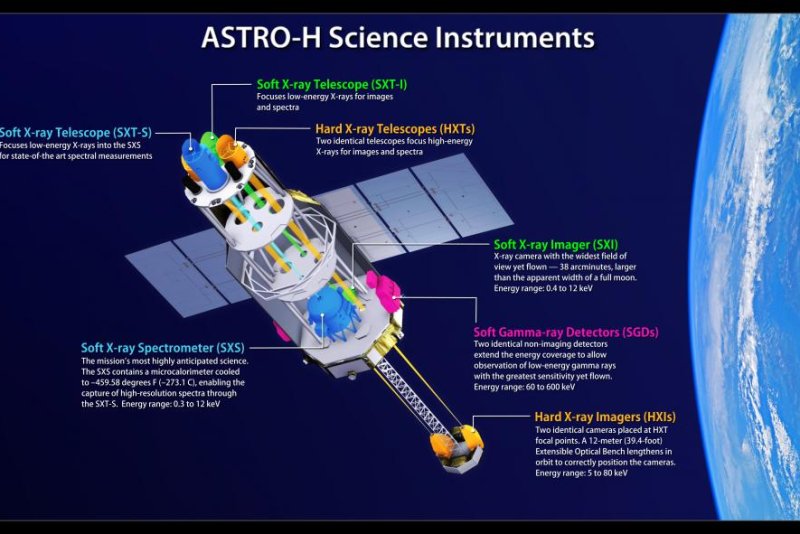The Japanese Aerospace Exploration Agency, or JAXA, is expected to send the ASTRO-H, a new X-ray observatory, into space Friday. Image courtesy of JAXA/NASA's Goddard Space Flight Center
GREENBELT, Md., Feb. 11 (UPI) -- A powerful space telescope designed to probe the universe is to be launched from Japan's Tanegashima Space Center in Kagoshima.
The Japanese Aerospace Exploration Agency, or JAXA, is expected to send the ASTRO-H, a new X-ray observatory, into space Friday, Space.com reported.
The ASTRO-H is to collect information that could help scientists understand the evolution of galaxies, supernova explosions and other energetic events, NASA officials said.
The launch is the result of collaboration between the space agency's Goddard Space Flight Center in Greenbelt, Md., and Japan.
The United States provided one scientific instrument and two telescope mirrors.
The new telescope will be 10 times more sensitive to X-ray light than the Suzaku spacecraft that was in operation between 2005 and 2015.
The ASTRO-H is to study a wide range of high-energy light, using four co-aligned focusing telescopes.
Project scientist Robert Petre said that X-rays can be seen from sources throughout the universe, and "where the particles in matter reach sufficiently high energies."
"These energies arise in a variety of settings, including stellar explosions, extreme magnetic fields, or strong gravity, and X-rays let us probe aspects of these phenomena that are inaccessible by instruments observing at other wavelengths," Petre said.
The ASTRO-H would be the sixth X-ray observatory Japan launches into space, South Korea's News 1 reported.
The object is to travel in a circular orbit at an altitude of about 350 miles, and is to transmit information on the universe's evolution, and the formation of black holes.
Japan is to use a H-IIA Launch Vehicle to send the telescope into orbit.















